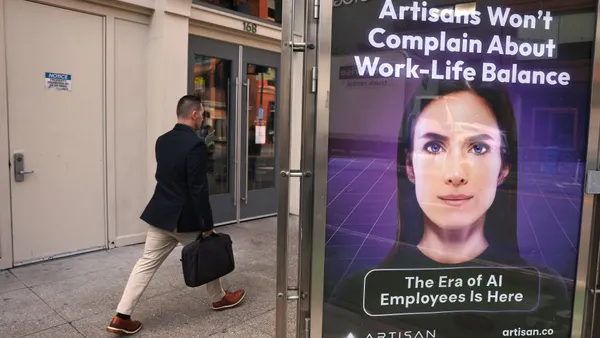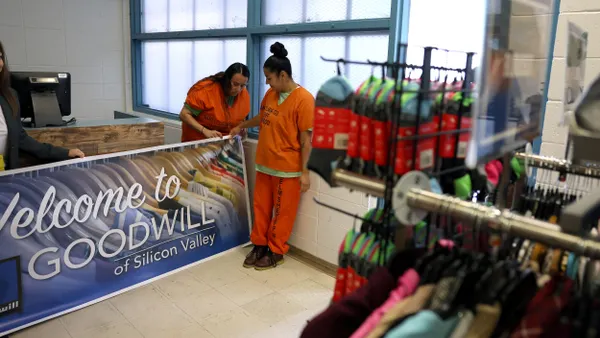Dive Brief:
- Workforce volatility, the measure of workers looking to quit their jobs, spiked nearly 70% in the second quarter of 2021, according to market analysis from Workforce Logiq, a global provider of AI-powered workforce intelligence, technology and services. The industries that saw the greatest jump in volatility from the first to second quarter include public safety, skilled trade and the military.
- While the three aforementioned industries saw the greatest change in volatility from one quarter to the next, they were all still below average overall. Finance, marketing, engineering, HR and recruiting were the industries with employees most "likely to engage," or be receptive to new opportunities, when compared to the average benchmark for that data.
- Broken down by state, Mississippi — the state with the highest percentage of the population unvaccinated at the study's release — experienced the highest quarterly volatility increase, with a 73% change. New Hampshire had the lowest increase, with a 32% change. "When compared, there appears to be a correlation between state-specific vaccination rates and quarterly employment volatility, (i.e. the lower the vaccination rate, the higher the employment volatility)," the report said.
Dive Insight:
Employers have been dreading the "Great Resignation," and Workforce Logiq's analysis seems to suggest it may now be upon them.
Some of the top industry-specific changes in quarterly volatility may be flukes, related more to circumstances affecting that particular industry than broader business trends. Public safety experienced the most change in volatility, for example, due to "historic numbers of police officer departures from many of the cities impacted by months of racial justice protests and policing reform efforts," the report says; "Officers are both retiring at accelerated rates, as well as more open to looking at employment opportunities in more welcoming geographies and adjacent sectors." This employment trend is highly specific to policing.
It's worth noting that the majority of industries Workforce Logiq recorded with employees most likely to look for new opportunities feature desk-anchored office jobs, where employees may have been working from home over the past year and a half and may be beginning to navigate the return-to-work process with their employers. Employees have indicated they do not want to go back to a full-time office schedule; it is possible that Workforce Logiq's data points toward related tensions leading employees to look elsewhere for work.
Looking at the results geographically, the data also seems to point toward what other reports have indicated: some employees, especially those who have been risk-averse during the pandemic, remain nervous about the potential of COVID-19 infection at the office. "The correlation [between low vaccination and high volatility] suggests employees in these states may have higher risk tolerances and are more apt to embrace career changes and new opportunities," Workforce Logiq noted in a release.












